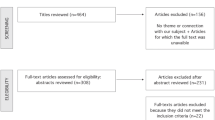Abstract
The goal of this paper is methodological. It offers a comprehensive mapping of the theoretical positions on the ethical criticism of art, correcting omissions and inadequacies in the conceptual framework adopted in the current debate. Three principles are recommended as general guidelines: ethical amenability, basic value pluralism, and relativity to ethical dimension. Hence a taxonomy distinguishing between different versions of autonomism, moralism, and immoralism is established, by reference to criteria that are different from what emerging in the current literature. The mapping is then proved capable of (1) locating the various theories that have been proposed so far and clarifying such theories’ real commitments, (2) having the correct relationship with actual art making and art criticism practices, and (3) showing the real weight of the alleged counter-example to a moralist position of a work that succeeds artistically because of its immorality.
Similar content being viewed by others
Notes
This is, however, a dimension of ethical evaluation that may be quite marginal to the evaluation of literature.
As these examples suggest, artworks’ consequences can be distinguished between large- and small-scale consequences, a distinction I have investigated in (Giovannelli 2004).
An obvious difference in scope between Carroll’s theory and Gaut’s is that the former is formulated for representational works only, specifically for narratives, while the latter is meant to apply to non-representational works as well (see Gaut 1998, 193). Yet this is not the difference Carroll is referring to.
Many of the theoretical possibilities I present in this paragraph are the result of conversations with my colleague Owen McLeod and helpful suggestions by an anonymous referee.
By no means should my pointing to the range of theoretical possibilities be taken as suggesting that actual philosophical theories are, or ought to be, so specific about their claims.
Many thanks to an anonymous referee for prompting clarification on this point.
By the same token, the criteria generating my taxonomy show how Carroll (2000, 378) does make an autonomist concession after all, one that he cannot consistently make, when he allows for the possibility of immoral works that are “so subtle as to escape a morally sensitive audience.” For, if such works belong to one of the genres or kinds the moralist thesis is stated about, the claim for a systematic bearing of ethical value on artistic value is contradicted and the view is, after all, ultimately autonomist.
References
Anderson, J., & Dean, J. (1998). Moderate autonomism. The British Journal of Aesthetics, 38, 150–166.
Bell, C. (1987). Art. Oxford: Oxford University Press. (Reprint, originally published in 1914).
Booth, W. (1988). The company we keep: An ethics of fiction. Berkeley: University of California Press.
Carroll, N. (1996). Moderate moralism. The British Journal of Aesthetics, 36, 223–238.
Carroll, N. (1998a). Art, narrative, and moral understanding. In J. Levinson (Ed.), Aesthetics and ethics: Essays at the intersection (pp. 126–160). New York: Cambridge University Press.
Carroll, N. (1998b). Moderate moralism versus moderate autonomism. The British Journal of Aesthetics, 38, 419–424.
Carroll, N. (2000). Art and ethical criticism: An overview of recent directions of research. Ethics, 110, 350–387.
Gass, W. (1993). Goodness knows nothing of beauty: On the distance between morality and art. In J. Fisher (Ed.), Reflecting on art (pp. 108–116). Mountain View: Mayfield. (Originally published in 1987).
Gaut, B. (1998). The ethical criticism of art. In J. Levinson (Ed.), Aesthetics and ethics: Essays at the intersection (pp. 182–203). New York: Cambridge University Press.
Gaut, B. (2001). Art and ethics. In B. Gaut & D. M. Lopes (Eds.), The Routledge companion to aesthetics (pp. 341–352). London: Routledge.
Gautier, T. (1981). Mademoiselle de Maupin. (J. Richardson, Trans.). Harmondsworth: Penguin. (Originally published in 1835).
Giovannelli, A. (2004). Artistic and ethical values in the experience of narratives. Dissertation, University of Maryland, College Park.
Giovannelli, A. (2005). Review of J. L. Bermúdez & S. Gardner (Eds.), Art and Morality. (London Routledge, 2003). Mind, 114, 119–123.
Isenberg, A. (1973). Aesthetics and the theory of criticism: Selected essays of Arnold Isenberg. (W. Callaghan et al., Eds.), Chicago: The University of Chicago Press.
Jacobson, D. (1997). In praise of immoral art. Philosophical Topics, 25, 155–199.
Jacobson, D. (2006). Ethical criticism and the vice of moderation. In M. Kieran (Ed.), Contemporary debates in aesthetics and the philosophy of art (pp. 342–355). Oxford: Blackwell.
Kieran, M. (1996). Art, imagination, and the cultivation of morals. The Journal of Aesthetics and Art Criticism, 54, 337–351.
Kieran, M. (2003). Forbidden knowledge: The challenge of immoralism. In J. L. Bermúdez & S. Gardner (Eds.), Art and morality. London: Routledge.
Wilde, O. (1974). The picture of Dorian Gray. (I. Murray, Ed.), London: Oxford University Press. (Originally published in 1891).
Acknowledgements
Many thanks to Jerrold Levinson, Owen McLeod, and an anonymous referee for their comments and suggestions.
Author information
Authors and Affiliations
Corresponding author
Rights and permissions
About this article
Cite this article
Giovannelli, A. The Ethical Criticism of Art: A New Mapping of the Territory. Philosophia 35, 117–127 (2007). https://doi.org/10.1007/s11406-007-9053-0
Received:
Accepted:
Published:
Issue Date:
DOI: https://doi.org/10.1007/s11406-007-9053-0




